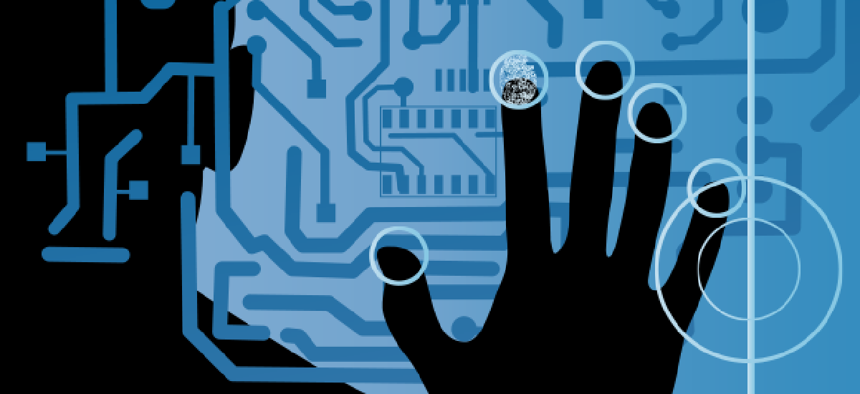Identity search engine compares biometrics to watch lists


Connecting state and local government leaders
MorphoTrust’s automated biometric identification system helps warfighters on the ground verify identities with a search engine that registers and compares biometric features against data on file.
When soldiers in war zones need to verify the identity of individuals they meet, they compare an individual’s biometric features against those in a range of databases. The faster that data can be searched and processed, the better.
In November, the Defense Department renewed its contract with Massachusetts-based MorphoTrust USA for the company’s ABIS software platform, which now includes upgraded algorithms that improve speed and accuracy. ABIS stands for automated biometric identification system, and the company’s solution helps warfighters on the ground verify identities with an “identity search engine” that registers and compares biometric features against data on file.
“A lot of the data that they collect and store is from the battlefield, whether it’s Kosovo or Iraq or Afghanistan or other hotspots around the world,” said Benji Hutchinson, senior director of federal programs at MorphoTrust. “Other military forces will collect that data and use it for force protection or for identity intelligence operations to support military operations around the world.”
For example, ABIS helps the military create watch lists. “If Special Operations encounters [a bad actor] on a raid, they would take a picture or the fingerprints. And if there was a match, [that individual] could be added to the watch list,” Hutchinson said. “That watch list would then be shared within the parameters of certain policies with other federal agencies so that if that individual were to be released or try to board an airplane or try to gain entry into the United States, they would then be flagged.”
MorphoTrust provides DOD with an enterprise license and support that enables the Army to collect data on the battlefield. The Army uses handheld data collection devices or laptops outfitted with fingerprint scanners and/or cameras to capture face, fingerprint, iris scans and palm prints. The collection devices have a graphical user interface with icons of an eyeball, fingerprint and face. The warfighter selects one and begins the enrollment process.
“Because these soldiers operate in international environments, typically there’s not a whole lot of language on [the screen] to make it easier for both the solider and for the person being enrolled,” said Hutchinson. After taking the scan or picture, soldiers “enter in a couple of fields like name, date of birth and a couple other pieces of information. From there, the laptop and software application (or the desktop computer or mobile [device]) then create the data file that’s transmitted back to West Virginia, which is where the data sits. Then it’s processed.”
Once the system checks for a match, the soldier gets an alert – a red X, showing no match, or a green check, indicating a match. If the result is inconclusive, a biometrics expert is called in to do additional evaluation.
MorphoTrust does not store any of the data in its system; all the information goes to DOD’s data center.
And when soldiers have no connectivity, they can compare the information to locally hosted watch lists. Watch lists are a subset of the larger database and can be loaded onto the collection devices.
“In other cases where the disconnected collection devices do not have a locally stored watch list, once those devices regain connectivity, they sync or upload their new data to the larger database,” Hutchinson said.
Hutchinson said he expects DOD officials to consider upgrading their search engine core in the next year or two. “That will increase a lot of efficiencies both in performance and accuracy of the algorithms,” he said.
To further build out ABIS, MorphoTrust is working on a cloud-based version, a trusted-identity-as-a-service product called Identix, which will likely be available in 2017 or 2018, Hutchinson said. It will take the algorithms and put them in a cloud infrastructure. First up is OpenStack, followed by Amazon Web Services. The solution will have two parts: the Identix Trusted Identity platform, a hosted solution that will enable biometrics search and comparison, and Identix Mobile SDKs, which will make identity verification available on mobile devices.
“What we want to do is build out these common services so that agencies can migrate to the cloud,” he said. “It can be a secure cloud and they can build out common applications that can take advantage of these cloud services.”
Cloud use is not unheard of for sensitive operations. CIA started using a private cloud set up by Amazon in 2014, for example.
“The big difference is we see the scalability changing” with cloud, Hutchinson said. “In the past, people used to buy software licenses for very large databases. Now, they may still have that need, but they also have a need to get a platform that does smaller amounts of transactions, and they may need to scale up or scale down. That’s where the cloud is perfect.”
NEXT STORY: Feds look to secure common workflows




